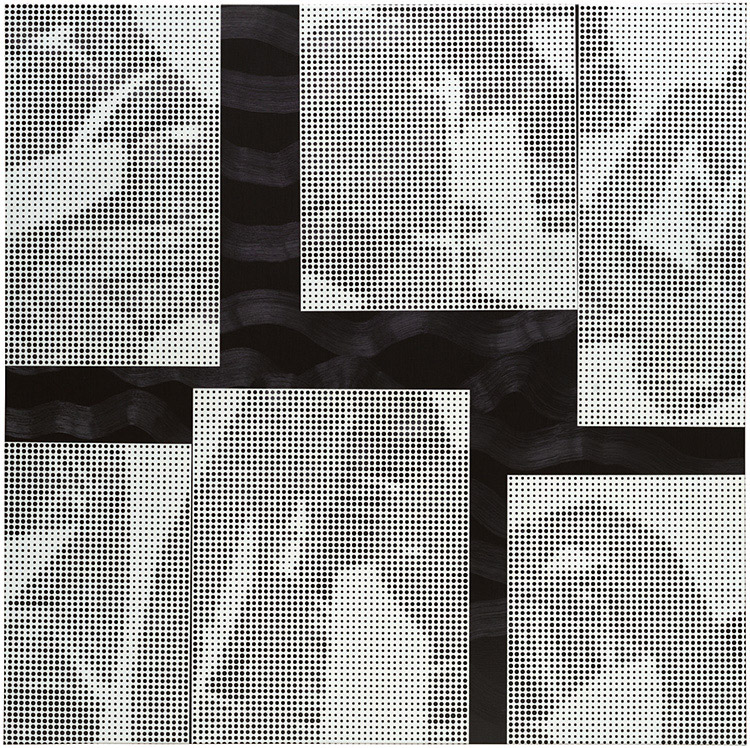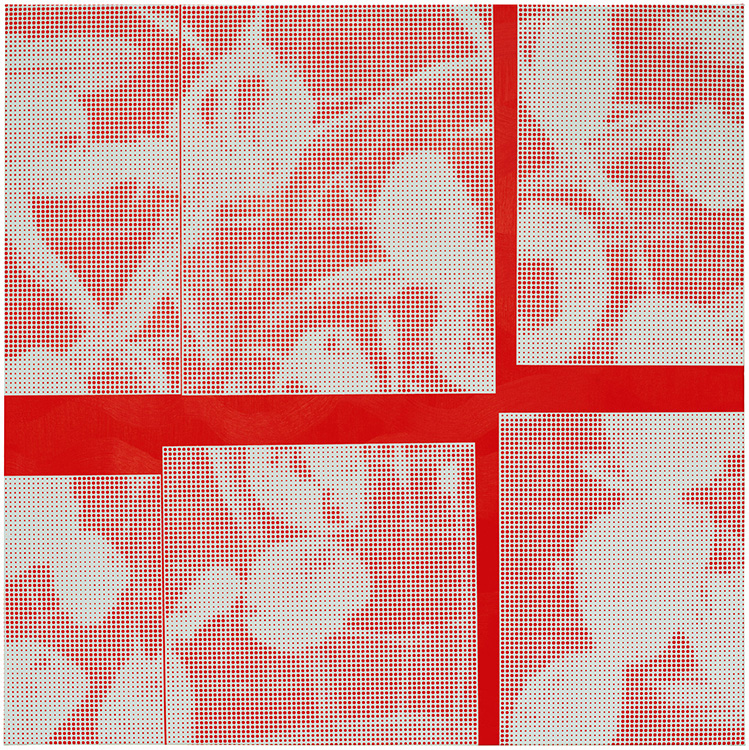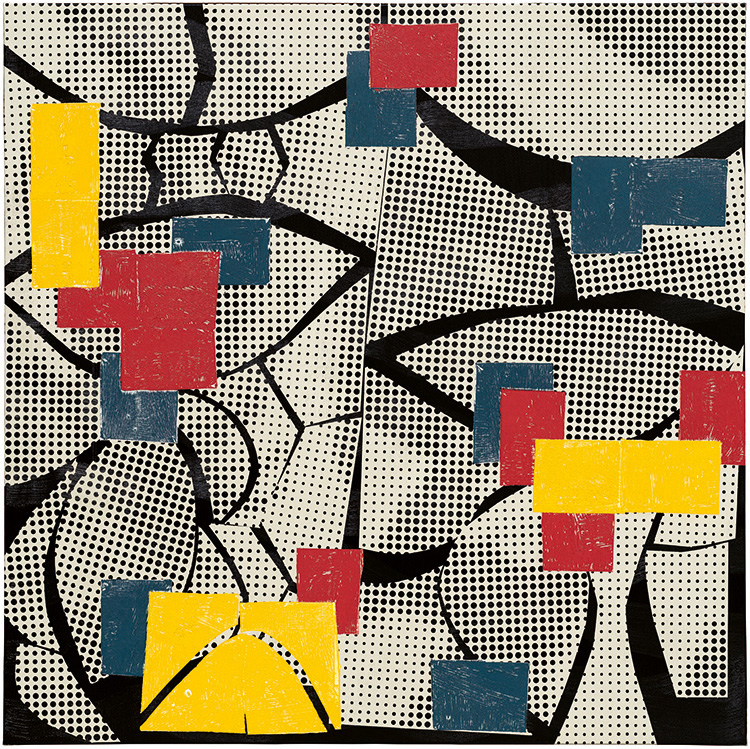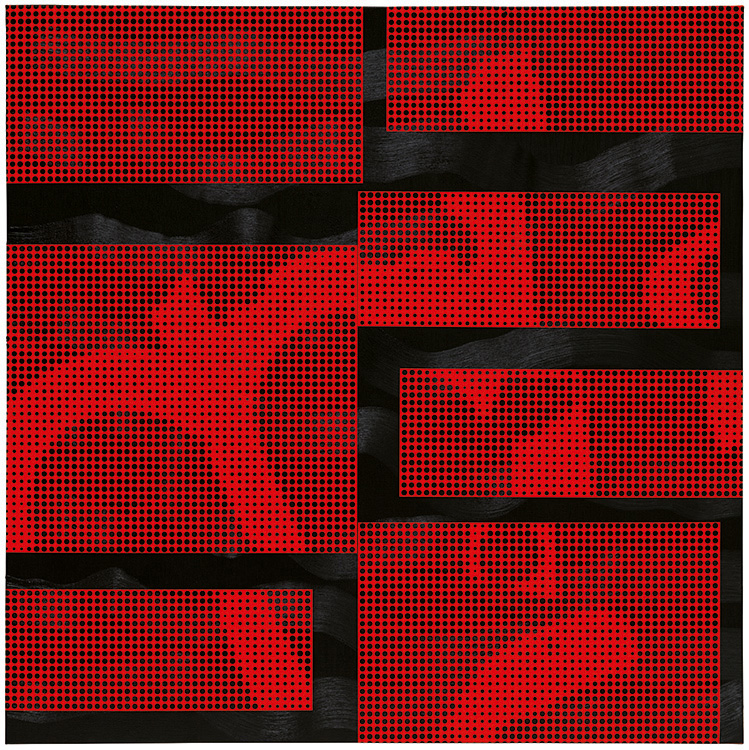ART-PRESENTATION: Yves Zurstrassen
 Yves Zurstrassen’s work is always moving, going from Lyrical Abstraction to Abstract Expressionism and vice versa. The artist develops a singular creating process and uses a very particular technique that reflects the desire to go beyond temporality. His approach plays with the principle of collage and take-off of various forms of paper on successive layers of color.
Yves Zurstrassen’s work is always moving, going from Lyrical Abstraction to Abstract Expressionism and vice versa. The artist develops a singular creating process and uses a very particular technique that reflects the desire to go beyond temporality. His approach plays with the principle of collage and take-off of various forms of paper on successive layers of color.
By Dimitris Lempesis
Photo: Xippas Gallery Archive
Jazz and free jazz play an important role in the work of Yves Zurstrassen, strongly influenced in his work by great musicians like John Coltrane, Ornette Coleman, Eric Dolphy and Evan Parker, with whom he “Communicates through painting”. Yves Zurstrassen in his solo exhibition “Something Else” preents a body of work carried out since 2014 till today. Yves Zurstrassen at the age of 18 he started to paint, alternating studio work with long periods of work in France, in the charterhouse of La Verne, or in Andalusia, where he painted outdoors. He exhibited for the first time in Brussels in 1982. A self-taught painter with training in the graphic arts, he learned his craft in the 80s among the artists’ studios and retrospectives of the masters of abstract expressionism, Jackson Pollock, Willem de Kooning, Cy Twombly and Mark Tobey, in opposition to the standard idea at that time in France of the death of painting. Zurstrassen deliberately chose to focus on the rectangle of the painting, with only the stretchers, the canvas, paper, and paint, to seek new freedom of expression. At the end of the 90s he settled in a disused industrial building that he adapted to his work and studies. Starting in the 2000s his approach evolved, inspired also by his love of the Dada movement, of Kurt Schwitters; at first through small format studies that occupied a more important place in his work; his technique was enhanced by collages of torn, cut-out newsprint integrated into the picture and then detached, removing the paint. He says that he opens windows in the memory of the picture. He integrates into these collages shapes cut from photos that he takes in the public space, urban motifs or details of everyday life, and digitally reworks, as in the monumental (94 m) work installed in the Gare de l’Ouest [Brussels-West Station] in Brussels in 2009. The beginning of the 2010 decade saw the cut-out motifs, which at the beginning were placed on the surface of the composition, change place to completely cover the background. Although Yves Zurstrassen’s painting, forever in motion, has evolved throughout the years, there is something that remains intact: the desire to combine the expressive painterly gesture, which is intuitive and free, with calculated, precise, mathematical forms. The latter re-emerge on the surface of the paintings, giving structure and introducing a regular or syncopated rhythm to the lyrical sum of the compositions. The pictorial adventure begins with the application of paint on the canvas, in order to create a unified background, which functions as a stage that will only stay empty a short time. Next, using collage, the real action starts. Stencils of blank newsprint, produced by a cutting machine connected to a computer, are disposed directly onto the fresh, wet paint of the background. What follows is a pause – a sort of intermission – which lasts until the paint has dried. This moment in the painterly construction is essential for the colours to remain pure and luminous, without being altered by coming into contact too quickly. We then move on to the second act, where the whole surface is covered over again, but this time with paint, until there are no empty spaces remaining. The more recent works, and especially the small and medium-sized pieces, which Yves Zurstrassen considers to be “research areas”, result from this exact procedure, and bring ornamental and vertiginous motifs to the surface of the paintings. The bigger recent canvases are part of a logic of evolution which only becomes visible in retrospect. However, this exploration of the past is not that of art history but of the artist’s own vocabulary which he often revisits. In these canvases, the use of stencils creates lyrical and expressive forms drawn from earlier paintings. The latter, carefully filed in the artist’s personal archives, were first photographed, then their images were digitally treated before reappearing on new canvases, in different media and with different gestures: from paintings, they have been transformed into collages, whilst the expressivity of their forms has been deconstructed. And yet, this change of medium is only temporary, because for Yves Zurstrassen, collage remains a stage to be overcome. Literally – the stencils are only applied in order to later be taken off. Hence, old melodic motifs take on a second life in paint, exploring their own limits by way of these new rhythmic interpretations.
Info: Xippas Gallery,108 Rue Vieille Du Temple, Paris, Duration:27/10-8/12/18, Days & Hours: Tue-Fri 10:00-13:00 & 14:00-19:00, Sat:10:00-19:00, www.xippas.com



